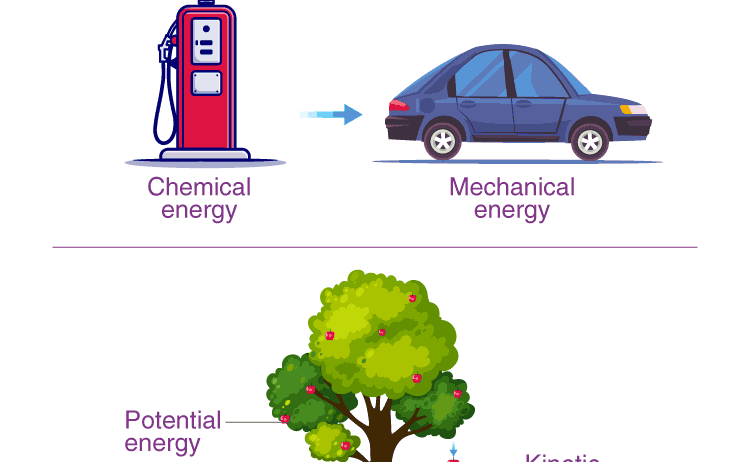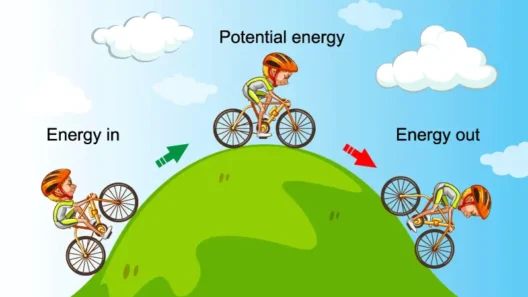In the vast tapestry of the physical universe, the Law of Conservation of Energy stands as a fundamental principle that governs all natural phenomena. This law asserts that energy cannot be created or destroyed; it can only be transformed from one form to another. Such transformation is not merely a theoretical concept but plays a pivotal role in myriad real-world applications, illuminating the intricate dance between energy forms and the profound impacts on our environment.
Throughout history, humans have harnessed this principle, shaping technological advancements and creating a world that maximally exploits the energy that is available. From simple machines to complex systems, the implications of energy conservation resonate deeply, emphasizing both the efficiency and sustainability of our practices.
To explore the implications of the Law of Conservation of Energy, let’s delve into examples that illustrate this concept in action, demonstrating how this principle acts as a linchpin for innovation and responsibility.
Understanding Energy Transformation in Everyday Life
Consider the classic example of a pendulum, swinging back and forth, executing a mesmerizing dance between potential and kinetic energy. At the apex of its swing, the pendulum possesses maximum potential energy, a result of its height. As it descends, that potential energy metamorphoses into kinetic energy, which is at its peak as the pendulum swings through its lowest point. This continuous conversion exemplifies not only the Law of Conservation of Energy but also highlights how energy moves and interacts through systems.
Such simple yet profound illustrations can be witnessed all around us. Take, for instance, hydroelectric power plants. Water falling from great heights possesses gravitational potential energy. Upon descending, this energy transforms into kinetic energy, driving turbines that convert this kinetic energy into electrical energy. Remarkably, in this process, the energy content remains constant, elegantly shifting form without any net loss. The significance here emphasizes the efficacy of renewable energy sources—the potential for clean, sustainable energy harnessing the natural laws that govern our world.
Innovation in Renewable Energy Technologies
In an era where environmental degradation looms large, innovative technologies that capitalize on the Law of Conservation of Energy have emerged as beacons of hope. Solar panels represent a paradigm shift in how energy is harnessed, encapsulating this principle in profound ways. When sunlight strikes photovoltaic cells, it transforms solar energy into electrical energy. Despite the conversion, the total energy is conserved; no energy is lost in the process, only converted into a usable form. This not only mitigates reliance on fossil fuels but also underscores a pivotal shift towards an ecologically responsible future.
Moreover, wind turbines present another compelling application of this law. Wind energy, a result of the uneven heating of Earth’s surface, is converted into mechanical energy and subsequently into electrical energy through the rotation of turbine blades. With each gust of wind, kinetic energy is captured and transformed, emphasizing the symbiotic relationship between natural phenomena and human ingenuity. By embracing these technologies, we pave the way for a world increasingly powered by renewable sources, ushering in a new era of energy conservation.
The Beauty of Energy Efficiency in Industrial Practices
Beyond individual applications, the Law of Conservation of Energy has profound implications in industrial practices and large-scale operations. Energy efficiency measures, such as cogeneration and energy recovery systems, showcase the creative application of this law in enhancing productivity and sustainability.
Cogeneration, or combined heat and power (CHP), epitomizes how industries can utilize energy resources judiciously. In this scenario, instead of discarding heat produced as a by-product of electricity generation, cogeneration systems capture and reuse this waste heat for additional power generation or heating purposes. This holistic approach reduces energy losses, embodying the conservation principle and demonstrating how industries can operate with minimal environmental impact.
Energy recovery systems, particularly prevalent in manufacturing, further illustrate the practical applications of energy transformation. Waste heat from industrial processes can be repurposed to preheat incoming materials, significantly enhancing overall energy efficiency and reducing operational costs. By implementing such technologies, industries not only bolster their economic viability but significantly lessen their ecological footprints, aligning with global sustainability goals.
The Role of Energy Conservation in a Sustainable Future
The importance of understanding and applying the Law of Conservation of Energy cannot be overstated. As global energy demands continue to escalate, it becomes imperative to focus on energy conservation strategies. The aesthetic appeal lies in recognizing the elegance and harmony of systems that respect this law; it reflects a thoughtful integration of technology, natural resources, and ecological responsibility.
By employing energy conservation techniques and championing renewable energy sources, we embrace a narrative that advocates for a sustainable future. Investing in education, technology, and an environmentally aware mindset ignites a crucial dialogue around our energy consumption patterns and the transformative steps needed to foster a more sustainable world.
In conclusion, the Law of Conservation of Energy serves not only as a foundational principle of physics but as a guiding light for innovation and sustainability. The examples discussed—be it through simple observations in pendulums, advanced renewable technologies, or the efficiency of industrial practices—testify to the profound interconnections between energy forms and their applications. It encapsulates a vision of how we can reshape our energy future, revealing both the intrigue and aesthetic appeal of a world in which every ounce of energy is treated with reverence and purpose.





